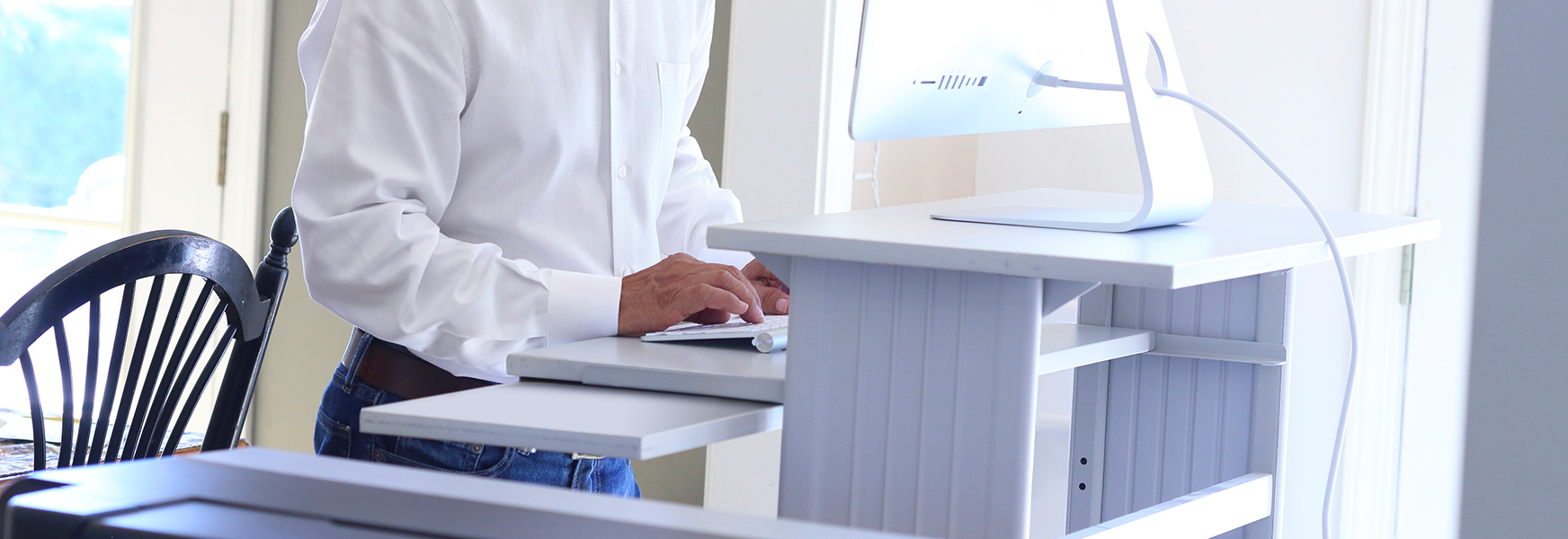To Sit, or Not to Sit...That is the Question

Yeah, yeah, you have probably heard this already: “sitting is the new smoking.” Everyone seems to think that if we could just get out of our chairs our problems would be solved. Dynamic workstations can bring enormous benefits, but a poorly designed or improperly implemented dynamic workstation can actually make the situation worse.
Dynamic workstations are the new buzzword for office environments. A dynamic workstation is one that encourages movement and postural changes. While you may have read about them or even tried one, do you really know what you are getting into when you decide to move ahead with dynamic workstations?
First, you should have a good handle on your current work environment and what you hope to achieve with a dynamic workstation. Do you work alone or do you work closely in a collaborative environment? Do you need to spread out your paperwork? Do you spend a lot of time on the telephone? Do you have physical limitations for sitting or standing?
Once you understand your work needs, you can begin to think about changing the work environment physical layout. These are the key elements: adjustable height work surfaces, good supportive chairs, appropriate lighting, and the computer.
Let’s focus on the desk. There are three ways to approach this.
- Fixed standing height desk
- An add-on desktop device sitting on, or attached to existing fixed height desk
- Adjustable height desk
A fixed-height desk is the same height as your standing-elbow height. This is measured from the floor to the bottom of the elbow. Knowing the elbow height is crucial to getting the proper desk height. A desk that is too high or too low will be uncomfortable and lead to awkward postures. With this approach, you need a chair that can be used with this high workstation. These chairs are high, and can be tricky to climb in and out of. The employee’s feet will not reach the floor, so a foot-ring on the chair and a footrest are required.
An Add-on is a device that sits on top of, or is clamped to an existing desk. The VARIDESK and Ergotron are the leading manufacturers of these devices, although new products are coming on the market all the time. These devices allow you to alternate between sitting and standing. Each type has its strengths and weaknesses. Ease of installation and adjustability are key differences. Many have limited space for paperwork. So if you need to spread your paperwork over a wide area, this may not be an appropriate solution for you.
An adjustable height desk is the preferred solution. These can be manually adjusted, pneumatically or spring assisted, or electrically powered. You can alternate between sitting and standing with the push of a button or by turning a handle. Prices have come down to the point where they are very close in price to the add-on devices. A benefit of these desks is that they can be adjusted for seated heights too. So the same desk can be used for a 5’2 and 6’2 person, sitting or standing. With staff changes, these desks can easily be configured for a person who is taller or shorter than the previous user.
In summary, dynamic workstations are the future of office furniture. Understand your environment and your needs before you take the plunge. The desk is one of the key components of a dynamic workstation.
To learn more about this topic, MEMIC policyholders in Maine can register for a live workshop on April 12.

